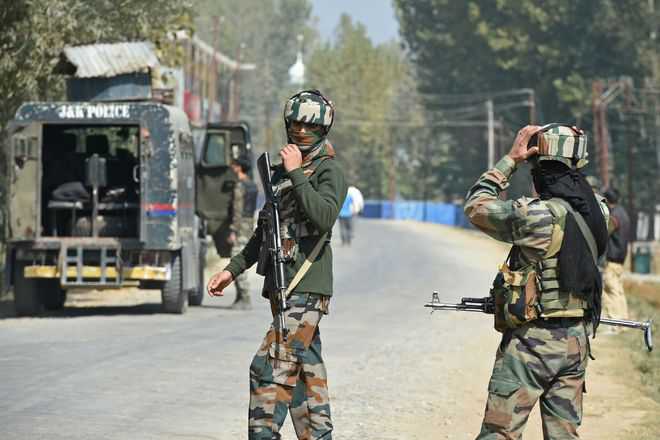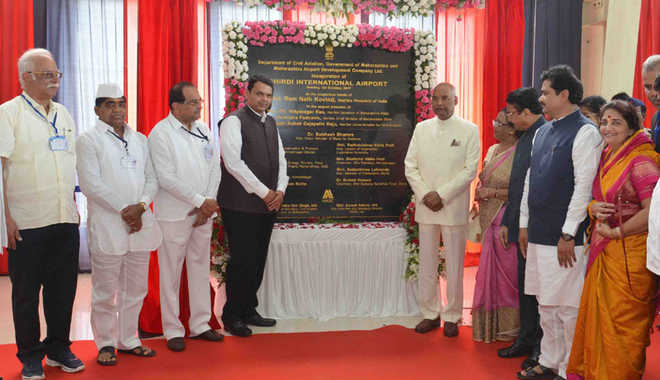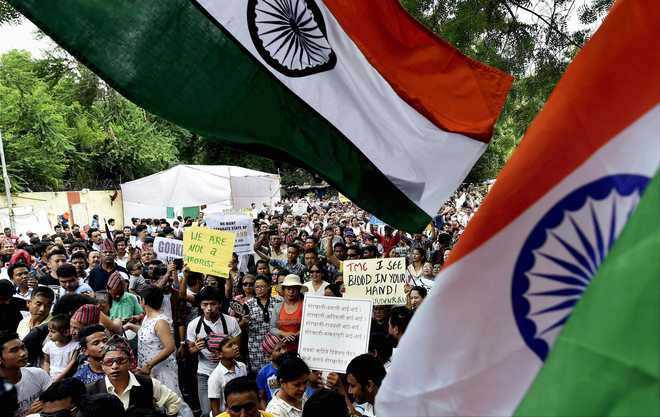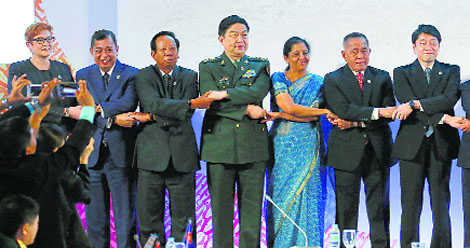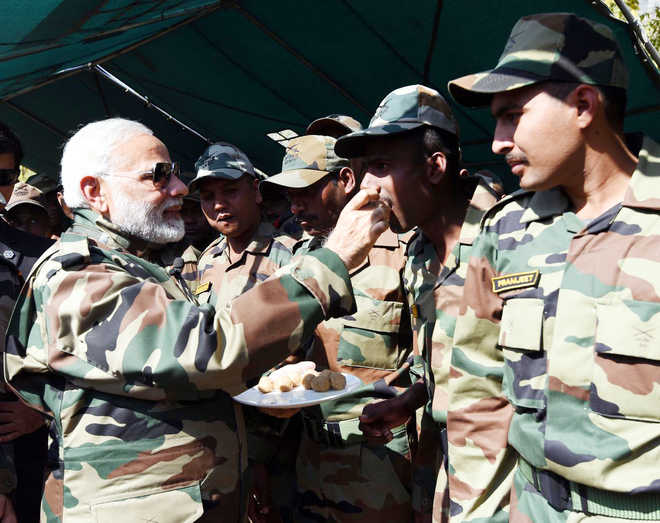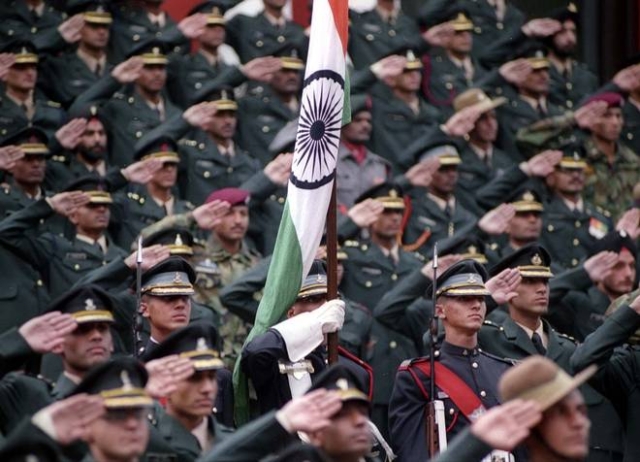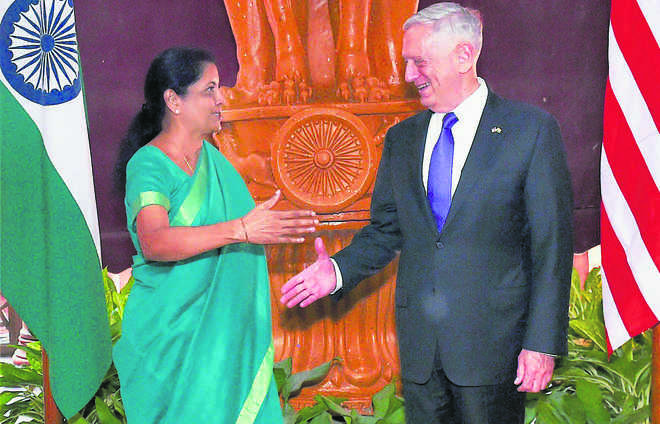
Not quite there: The US, in spite of Trump’s tirade, wants to take Pakistan along.
MK Bhadrakumar
THE visit by the US Defence Secretary James Mattis to New Delhi last week provided the opportunity for the first focused high-level interaction between the two countries regarding President Trump’s announcement of the new policy outlining a new South Asia strategy. Unsurprisingly, much speculation preceded Mattis’ arrival in Delhi. Arms dealers and fat cats anticipated defence deals and closer military ties — in particular, the US offer to relocate its factory for production of vintage F-16 fighter jets to India, which is being mothballed in America.Western media reports even linked closer US-Indian military ties with Trump’s Afghanistan strategy. Some Indian reports blithely forecast a deployment of Indian troops to Afghanistan. But, in all fairness, Mattis himself was noticeably circumspect. En route to Delhi, he told the Pentagon press party accompanying him that the Trump administration viewed India as a “natural strategic partner” and that he hoped to “set a refreshed partnership”. He said he was hoping to “basically putting meat on the structure… (and) promote pragmatic progress” in the defence partnership, “delivering defence interoperability”. He saw the visit as an opportunity to speed up decision-making by the bureaucracy at a “time of strategic convergence” between Washington and Delhi. Plainly put — and divested of the usual high-flown rhetoric about “shared values”, et al — Mattis hinted at his intent to give ballast to the arms sales by American vendors, project new arms deals and urge the Indian defence establishment to speed up decision-making on the pending proposals.Interestingly, however, Mattis was circumspect on Afghanistan. He never once voiced any criticism of Pakistan. He insisted that the “relationship we are building with India is not to the exclusion of other countries”. Mattis was confident that “Pakistan will find nothing out of line with India and the US alignment in the same fight”. He commended India’s role in Afghanistan but “would see them (India) continuing along the lines they have already chosen, and looking for other areas that they may believe appropriate to the relationship with Afghanistan”. Curiously, Mattis ducked a pointed question as to whether there is any shift in the locus of US-Indian security partnership away from the Obama administration’s efforts “to get India more involved in the South China Sea”, towards Afghanistan.What sails into view is a complex paradigm of US-Indian defence partnership in the Trump era. Quite obviously, Mattis’ brief was to play on Indian vanities as a regional and global power and establish a source of funding for “America First” via lucrative arms deals. The Afghan problem and China’s rise provide leitmotifs in the US-Indian strategic partnership, but in reality, the relationship complicates the advancement of Sino-Indian and India-Pakistan ties, which of course serves a useful purpose both as a template of the US’ containment strategy against China as well as to bring pressure to bear on Pakistan to cooperate with the US strategy in Afghanistan. India runs the risk of entrapment if it chooses to view its all-important ties with the US through the prism of its problematic relationships with Pakistan and China, instead of attributing a raison d’etre for them in intrinsic terms related to India’s development and its needs and aspirations as a regional power. Indeed, there is no certainty that the US concedes equal partnership to any interlocutor.In the circumstances, Defence Minister Nirmala Sitharaman did brilliantly well by underscoring in her joint press conference with Mattis that much as she appreciated his “willingness to share further cutting-edge platforms… we need to expand on the progress already made by encouraging co-production and co-development efforts”. Sitharaman added candidly: “I reiterated India’s deep interest in enhancing defence manufacturing in India under PM Modi’s Make-in-India initiative. I thank Secretary Mattis for his supportive position in this regard and look forward to working closely with him to realise joint projects.” She stressed that the US announcement last year recognising India as a major defence partner should go beyond optics and actually “refocus and reenergise the defence technology and trade initiative as a mechanism to promote technology-sharing as well as co-development and co-production efforts.”Of course, Sitharaman would know that the US doesn’t “co-develop” weapons or transfer military technology developed at enormous cost. It prefers to sell weapons and keep the end-users on a tight leash. Reuters reported recently that the US-India Business Council in a letter to the Indian Defence Ministry in August made it clear that US firms want to retain control over technology even if they are allowed to set up a production line for fighter jets and other equipment on Indian soil and, secondly, that they do not want to be held liable for any defects in equipment jointly produced with Indian counterparts. Clearly, “Make in India” is fast becoming a nuisance.Sitharaman also shrewdly distanced India from Trump’s new Afghan strategy. She made three key points: one, India’s Afghan policies enjoy great continuity (by far predating Trump’s entry into politics and diplomacy); two, India’s focus will be on assisting Afghanistan in its development, economy, capacity-building — nothing more, nothing less; and, most importantly, India will not deploy troops to Afghanistan. All in all, she factored in that in the prevailing international milieu, the challenge for Indian diplomacy lies in differentiating the imperative needs of India’s military modernisation (and the creation of a world-class defence industry) from the geopolitics swirling around the region. After all, Asia-Pacific did not stand still because of Mattis’ visit. US Vice-President Mike Pence met Pakistani PM Shahid Khaqan Abbasi on September 20 for an important conversation about the President’s South Asia strategy and highlighted ways that “Pakistan could work with the US and others to bolster stability and prosperity for all in South Asia” and reiterated President Trump’s belief that “Pakistan has much to gain from partnering with our effort in the region”.Again, Secretary of State Rex Tillerson arrived in Beijing on yet another visit “to meet with senior Chinese leaders… (to) discuss a range of issues, including the President’s planned travel to the region, the denuclearisation of the Korean Peninsula, and trade and investment.” Washington flagged that Tillerson’s visit “reaffirms the (Trump) administration’s commitment to further broaden and enhance US economic and security interests in the Asia-Pacific region”.Of course, just before emplaning for Beijing, Tillerson also co-chaired with the visiting Chinese vice-premier Liu Landong the first China-US Social and People-to-People Dialogue. And Trump himself received Liu in the White House on September 29 to convey that his visit to China in November is sure to be a “success”.The writer is a former ambassador












